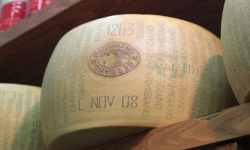Geographical Indication Owners are Using Cutting Edge Technology to Protect their Brands

Champagne is from the Champagne region of France, Parmigiano Reggiano cheese and Prosciutto di Parma ham from the Parma region of Italy, Toscano olive oil from Tuscany, and Roquefort cheese from the region of the same name in France. Then there is Irish Whiskey, Darjeeling tea, Florida oranges, Idaho potatoes, Vidalia onions, Washington State apples, and Napa Valley wines. This is but a tiny example of products associated with “geographical indications” (GIs). A GI may be defined as:
a name or sign used on products which corresponds to a specific geographical location or origin (e.g., a town, region, or country). The use of a geographical indication, as an indication of the product’s source, is intended as a certification that the product possesses certain qualities, is made according to traditional methods, or enjoys a good reputation due to its geographical origin.
Geographical indications are protected by international treaty such as the Agreement on Trade-Related Aspects of Intellectual Property Rights (TRIPS) as well as trademark and unfair competition laws such as the Lanham Act in the United States.
There has also been considerable scholarly interest in “geographical indicators.” For example, in 2009, Prof. Tilman Becker wrote in the The Estey Centre Journal of International Law and Trade Policy that geographical indications are of particular importance to food policy and economics in the European Union (EU). For example, in 2002, France had the highest number of products registered with geographical indicators, but “Italy has used the high potential to increase producer revenues through origin labeling. There were 26 cheeses and 2 ham products certified before 1992. The number of registered products in 2007 already totaled 159.” According to The Wall Street Journal (pay wall), the approximate number of registered GIs in the EU is 3,500. GIs in the United States are equally important, although in the U.S. they are “generally treated as brands and trademarks, whereas the EU protects GIs through a series of established quality schemes.” Renée Johnson of the Congressional Research Service has written in a 2017 article:
Specifically, several industry groups have expressed concern that the EU is using GIs to impose restrictions on the use of common names for some foods—such as parmesan, feta, and provolone cheeses and certain wines—and limit U.S. food companies from marketing these foods using these common names. .
Our recent article on U.S. labeling of Gruyere cheese is demonstrative of the conflict between U.S. and EU policies.
GIs are so important that GI owners are using cutting-edge technology to protect their brands. In Italy, parmesan cheese production is geographically restricted and tightly regulated. The production process uses simple but specific ingredients, which undergo a time-consuming production protocol. Maturation of the cheese may take as long as 40 months. According to reports, members of the Consorzio del Parmigiano Reggiano (CFPR) are embedding 90-pound cheese wheels with edible computer chips to guard against counterfeiting of the King of Cheeses. The chip or “micro-responder” is about the size of a grain of sand, which is inserted onto a food-safe casein label. By reading the label, the buyer can determine a unique serial ID that verifies the authenticity of the cheese wheel. Here’s what the cheesemakers say about the chip technology:
Since 2002, a casein label with a unique and sequential alphanumeric code is applied to each Parmigiano Reggiano cheese wheel but now p-Chip is launching a new line of secure, digital tracking labels for the industry, and the Consorzio del Parmigiano Reggiano is breaking new ground by embedding these p-Chip micro transponders into 2D codes, QR codes, and/or data-matrix codes. The result is an innovative, food-safe digital tag that takes CFPR’s food safety and security a step beyond the government requirement.
One must assume that other edible products will soon be similarly tagged in the name of protecting GIs and maintaining product quality and purity.
— Adam G. Garson, Esq.

